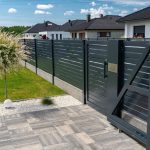News - Construction News
New void former promises to save time and complexity

Traditional methods of erecting building structures often involve complex processes that can be labour intensive and time consuming. However, an innovative piece of apparatus designed and developed in the UK is promising to reduce complexity and save time.
Before work can start on erecting building structures, preparatory works are typically needed to ensure there is adequate support for the building. In order to combat clay soil expansion and shrinkage, known as “heave”, it is common to line areas of the ground with compressible materials, known as void formers. A key challenge lies in achieving a balance between structural robustness, ease of assembly, and portability.
UK-based company, Premcrete Ltd, is developing solutions for erecting building structures. To overcome some of the problems involved, the company has recently been granted a UK patent – GB2616495 – for a novel void former.
This patented technology protects a novel void former for use in concrete construction, which utilises connecting and locking elements suitable for use in a deployed and stowed state. The void former includes fluted polypropylene board for the connecting elements, which are prepared through cutting and longitudinal scoring. This preparation allows the connecting elements to fold and flex strategically, enhancing their adaptability during assembly and deployment.
Locking elements, also cut from similar materials, play a crucial role in maintaining spatial integrity and structural stability, ensuring that the apparatus remains securely assembled under varying conditions.
When in use, the apparatus unfolds due to its inherent “spring” mechanism, enhancing operational readiness. Various temporary securing options, such as adhesives or ‘Velcro®’, enable convenient stowing and transportation. This makes the apparatus ideal for applications requiring frequent assembly and disassembly.
The method described in the patent has a number of distinct advantages. Utilising fluted polypropylene board for both the connecting and locking elements offers advantages in terms of lightweight construction, durability, and recyclability. This aligns with modern trends towards sustainable building practices while maintaining high-performance standards. The ultrasonic welding techniques used to join the connecting elements to a primary layer and a secondary layer of the void former, ensure a robust connection, without the need for mechanical fasteners. The complexity of the assembly process and the time needed to complete it, are reduced as a result.
In summary, the connecting and locking elements of the innovative void former represent a significant advancement in construction technology. The use of advanced materials and precise assembly techniques ensure their efficiency, durability, and adaptability in diverse construction environments.
With patent protection secured, Premcrete Ltd will benefit from a 20-year period of commercial exclusivity to either manufacture and sell the innovative void formers or to license the technology to third parties. During this time, competitors are barred from copying the innovation. Premcrete Ltd also has a corresponding patent application pending in Europe, enabling patent protection in multiple markets.
Mark Sugden, partner and patent attorney in the Advanced Engineering group at European intellectual property firm, Withers & Rogers.
If you would like to read more stories like this, then please click here
Related Articles
More News
- Merit Appointed to NHS Shared Business Services Modular Building Framework
1 Jul 25
Merit is pleased to announce its successful appointment to the NHS Shared Business Services (NHS SBS)
- £1Bn backed renewal of broken bridges, ruined roads and tired tunnels
30 Jun 25
The Structures Fund will inject cash into repairing bridges, flyovers and tunnels across Britain.
- £8Bn to be invested in flood defences over the next decade
27 Jun 25
A record £7.9Bn over ten years has been committed to flood defences.






